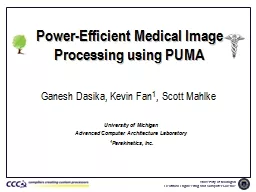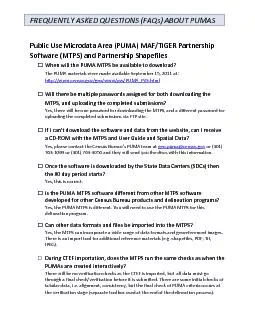PPT-Power-Efficient Medical Image Processing using PUMA
Author : myesha-ticknor | Published Date : 2016-12-05
Ganesh Dasika Kevin Fan 1 Scott Mahlke 1 Parakinetics Inc University of Michigan Advanced Computer Architecture Laboratory The Advent of the GPGPU Increasingly
Presentation Embed Code
Download Presentation
Download Presentation The PPT/PDF document "Power-Efficient Medical Image Processing..." is the property of its rightful owner. Permission is granted to download and print the materials on this website for personal, non-commercial use only, and to display it on your personal computer provided you do not modify the materials and that you retain all copyright notices contained in the materials. By downloading content from our website, you accept the terms of this agreement.
Power-Efficient Medical Image Processing using PUMA: Transcript
Download Rules Of Document
"Power-Efficient Medical Image Processing using PUMA"The content belongs to its owner. You may download and print it for personal use, without modification, and keep all copyright notices. By downloading, you agree to these terms.
Related Documents














